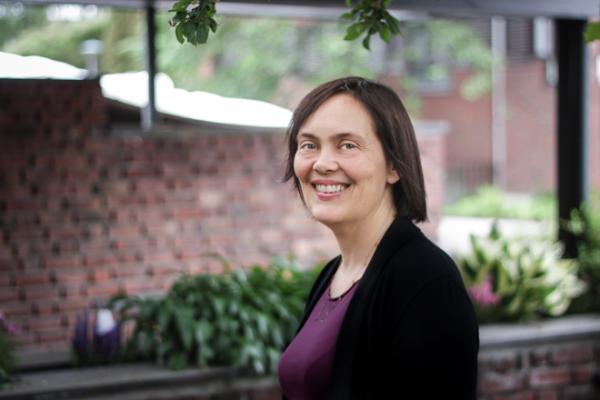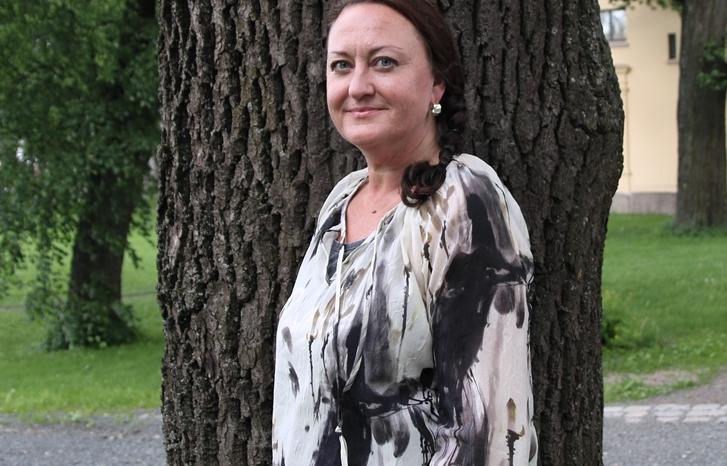In the autumn of 2019, the good news arrived that women and men now have approximately equal chances of scaling the academic career ladder – except for the transition from associate professor to professor, a leap that men are still somewhat more likely to make than women.
A gender-divided academic job market
The finding appeared in the report Attraktive akademiske karrierer? [“Attractive academic careers?”] from a study of job applications, recruitment and career mobility in Norway’s university and university college sector which was carried out by the Nordic Institute for Studies in Innovation, Research and Education (NIFU) in collaboration with the Institute for Social Research (ISF).

“We have now examined the past 10 years and see that the gender balance for career advancement is evening out at all job levels for the sector as a whole. But there is still a significant imbalance in the senior-level positions and there is wide variation between disciplines. If we want to understand phenomena such as gender imbalance, we must take the differences between disciplines into account,” says Nicoline Frølich, Head of Research at NIFU and the report’s project manager.
She considers it unproductive to search for correlations in academia as a whole because different disciplines have different recruitment patterns.
“The analyses here are distributed across disciplines, but the categories employed are relatively broad and imprecise. A more nuanced classification is needed as we go forward because the differences we are seeing also conceal large variations within the disciplinary groups we have looked at. One of our most important recommendations is to give consideration to the specific disciplinary subjects when designing recruitment policy at the institutions,” Frølich says.
Additionally, any measures implemented should begin at an earlier stage in the process than during recruitment for scientific positions, because the discipline-specific gender differences arise much earlier on the educational path.
“Like the rest of the Norwegian labour market, academia is gender segregated: women work in medicine and the health professions, and men in natural science and technology. We should look more closely at why women and men chose to study different subjects,” she says.
Different recruitment patterns
One aspect of this gender divide is that women gravitate more than men to education-oriented career paths, while men are more likely to pursue research-oriented career paths, rising from PhD candidate to professor.
The study also confirms earlier findings that women are more likely than men to advance in their career through promotion, and are less likely to apply for positions announced in open competition. When professorships are announced, the majority of qualified applicants are usually men from other countries. The medical and health fields are the exception.
“Are there two parallel academic job markets emerging – a domestic, Norwegian-language, education- and profession-oriented market that attracts women and an international, research-oriented market that attracts men?
“That is a question it is certainly worth asking. Another issue here is that international applicants appear to find Norwegian university and university college positions attractive, especially at recruitment level. That could be because the salary level is relatively good compared to many other countries, or because PhD candidates in Norway are seen as employees instead of being counted as students, as in many other countries. But I absolutely think it would be wise to keep an eye on the situation,” says Frølich.
The survey shows clear regional differences in recruitment, she points out. The largest and most central institutions attract plenty of qualified applicants, especially for research-oriented positions, while institutions in North Norway in particular experience a smaller applicant pool than the rest of the country.
“It’s one thing to announce a position at a large, central institution and quite another at a small, more peripheral institution. Announcements from some places are far more attractive than others,” she says.

Complex appointment processes
In the qualitative segment of the project the researchers interviewed individuals involved in the appointment processes for permanent scientific positions and thus serve as “gatekeepers” for academia’s upper echelon. Little information about such processes was previously available. The researchers also studied actual hiring reports, which include the original job announcements, applicant lists and expert’s evaluations of the applicants.
“In gender equality research there are many ways of interpreting, for example, why it’s mostly men who get hired as professors – such as that appointment committees are put together by men who are inclined to appoint people similar to themselves. We looked at the criteria that were actually used,” says Marte Mangset, researcher at the Institute for Social Research.
She finds the hiring process interesting because academic competence is so complex. Applicants must be good at researching, teaching, obtaining research funding and performing administrative duties – in addition to being considered a good colleague.
“But it is very difficult to balance these different qualities against each other in a fair way,” she says.
Publication is crucial
Ultimately, the method used most often to separate the few suitable candidates from all the rest is to compare their publication lists.
“To be specific, committees look at a particular type of publication: articles in a certain few English-language journals, over a limited period of time. What this means is that the assessment of who is good and not so good in Norwegian academia is done largely by the editorial staffs of these journals,” says Mangset.
Not that committee members have stopped reading the research for themselves – they read the work of shortlisted candidates. But it would take a lot for anyone in the local appointment committee to disagree openly with the editorial staff of a scientific journal.
Here, too, there is wide variation between disciplines, but the study’s researchers see a clear shift in this direction even within disciplines that have traditionally emphasized factors other than international publishing.
“This is not necessarily a negative development, but it is a big change. The fact that appointments are being carried out this way changes the discipline, and that is our point,” says Mangset.
Unknown impact on gender equality
The ramifications of this development for gender balance are not clear-cut, however.
On the one hand there is reason to believe a unilateral focus on early-career international publishing is detrimental to women, who may have trouble producing an adequate publication volume in the years they are establishing a family. On the other hand, operating with such quantifiable criteria can help to prevent unconscious discrimination and the phenomenon of “men recruiting men”. Counting the number of publications over a shorter period may also highlight women’s potential and make them attractive candidates for permanent positions.
“So some aspects can be positive, others negative. Personally, I think the focus on publishing may be disadvantageous for women in the long run, because we know women teach more than men and take on more administrative tasks. There are also differences in disciplinary focus. Quantitatively oriented researchers publish more than qualitatively oriented ones, and men are more likely to conduct quantitative research – to take an example from social science,” Mangset says.
She thinks the results may complement earlier research where the focus was on unconscious discrimination.
“There is little to indicate that women are discriminated against in Norway and the Nordic countries when they have as good a CV as male applicants. The problem is that in many cases their CVs are not as good. So we have to ask why women systematically end up with shorter publication lists than men, when they perform so much better earlier in the education system.”
Fears the emergence of an “A team” and a “B team”
Mangset says the study’s informants were painfully aware that many of the qualities that characterize a good academic are not taken into account in the most crucial phase of screening applicants. Many have begun to notice the unintended consequences, and fear the emergence of an “A team” of top international researchers who are unsuited to teach at the bachelor’s level and a “B team” of Norwegian-speaking staff who are forced to assume more than their share of teaching and administrative duties.
“So in some places it has become more legitimate to change the expert committee’s rankings in the final phase of the appointment process. Others believe they have to follow the committee recommendations in order to say the process was transparent and fair, and that they have appointed the objectively best candidate.”
Mangset believes we are at the start of a major discussion about the ramifications of this method of hiring.
“Instead of saying we only hire the best, it’s about time to discuss the trade-offs that are being made along the way, and what kind of diversity we want to encourage through the recruitment process,” she says.
More research on career development
This is the first systematic information obtained on who is applying for the different types of positions and what their background is. In the qualitative portion of the study the researchers also looked at recruitment processes, including the criteria employed and the types of considerations being weighed along the path between the job announcement and the appointment.
“Our analysis says something about what distinguishes people who pursue academic careers, but a great many variables remain that we don’t have information about, such as family situation, children and parental leave, income, partner’s work and income, and career opportunities outside academia,” says Nicoline Frølich.
Frølich and other NIFU researchers have launched a new research project in which they will look more deeply into underlying processes that may affect academia’s gender balance. The project is funded under the Research Council of Norway’s Programme on Gender Balance in Senior Positions and Research Management (BALANSE) and will also analyse the impact of policy instruments on efforts to improve gender balance.
“We will also be analysing differences among the disciplines, and of course we hope to have some interesting findings to report as we proceed.”
Translated by Walter Gibbs and Carol Eckmann.
This article was first published at Kifinfo.no
The report Attraktive akademiske karrierer? Søkning, rekruttering og mobilitet i UH-sektoren [“Attractive Academic Careers? Job applications, recruitment and career mobility in the university and university college sector” – Norwegian only] is based on a study conducted by NIFU in collaboration with the Institute for Social Research (ISF) on behalf of the Ministry of Education and Research.



